These tick tubes allow you to be free from the worry of Lyme Disease so that you can enjoy the warmer seasons to the fullest. There are a few precautions to take when making these since they use a pesticide. As a result, it's always a good idea to read the label, follow the directions and do a bit of extra research online to avoid any toxic situations.
CAUTIONS TO OBSERVE
Permethrin is highly toxic to bees and other beneficial insects, fish, tadpoles, and cats. Please keep the following in mind when making and distributing your Tick Tubes.
NEVER SPRAY NEAR:
Polinating Flowers, Ponds, Rivers, Streams or Cats. (Once the permethrin has dried it is not an issue for cats, however while wet it can be deadly to them.)
NEVER PLACE TUBES IN AREAS WHERE THEY COULD ROLL INTO OPEN WATER. ALWAYS FOLLOW ALL LABEL PRECAUTIONS!
While we are using the pesticide permethrin (a synthetically produced pyrethroid that was originally derived from chrysanthemum flowers), our specific targeting causes virtually zero long-term environmental impact when used correctly. (Except, of course, to the ticks!)
Permethrin kills insects while having very little effect on mammals, birds or the soil.
The one very important disclaimer for using this product is that it does kill honey bees so DO NOT EVER do this project or use this product in an area where the permethrin spray can drift onto blooming flowers!!!
Step-by-step Instructions:
-
Begin saving your cardboard toilet paper tubes and dryer lint. (You can also use cotton balls, old cotton batting from inside pillows or cushions, or other soft, fluffy, natural material that will degrade over time.)
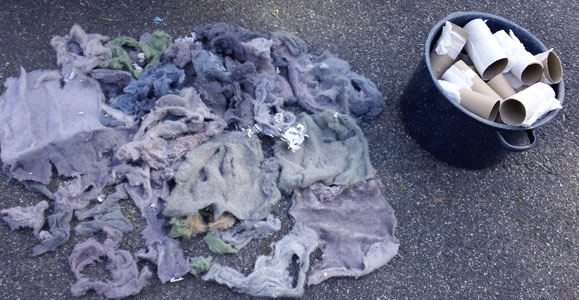
-
Purchase a can of Permethrin insect spray. You want a spray that is no more than 0.5% permethrin and DOES NOT contain any DEET.
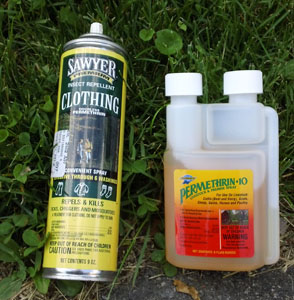
-
Select a well-ventilated outdoor area that is protected from wind and away from any blooming flowers that may be frequented by bees or other beneficial insects, and lay out your dryer lint.
-
Hold the can about 6 – 8 inches from the lint and spray with a slow, sweeping back and forth motion to lightly moisten the entire surface of the lint pieces.
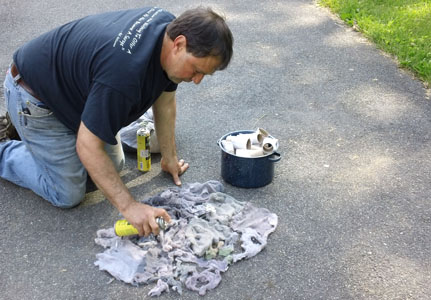
-
Continue spraying over the entire surface for approximately 60 seconds. You should notice that the outer surface of the lint is moist enough to have caused a slight color change.
-
Turn the material over and repeat steps 4 & 5 to treat the other side. (Wear gloves any time you are handling your material before the permethrin has completely dried.)
-
Hang the treated material and allow to dry for at least two hours (four hours under humid conditions) before proceeding to the next step.
-
Once your lint is dry, stick a small amount into the center of each toilet paper tube. Enough to fill the middle third, leaving a couple of inches empty at each end.
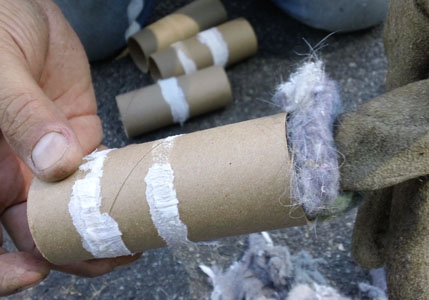
-
Put lint in tube Fill middle third. Fill all your tubes and store any extra lint in a bag.
-
Take your tubes and toss them out on the landscape in areas most likely to be frequented by mice, rats, chipmunks, squirrels and other rodents and small mammals. These tick hosts will pull out the treated dryer lint to use as “feathering” for their nests, where continued exposure to the permethrin will kill the larvae and nymph ticks, while not harming the mammals that live in those nests.
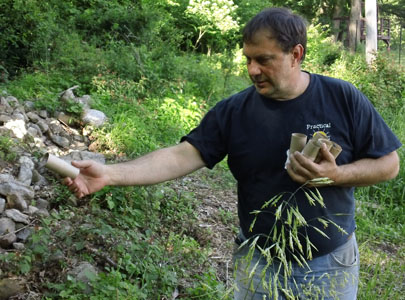
Have you created these tick tubes? Were they effective?
Article and Photo Source: Practical Primitive
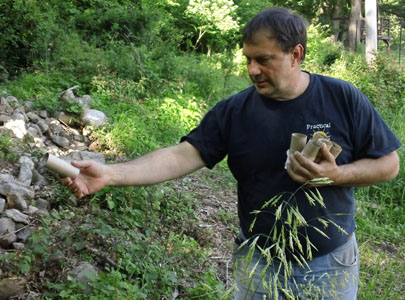
And when it rains you are left with contaminated areas.
Belinda Anderson
Every time I hear the words tick tubes I think of buford pusser sayin u pile of tick turds lmbo
Here ya go Nicki Nabors Bailey
Don’t do it very toxic to bees
I have to question the claim that it doesn’t harm the animals. Would it harm baby animals, which are more susceptible to chemicals? Would it become harmful of it got wet from rain?
First thing said in the article: Permethrin is highly toxic to bees and other beneficial insects, fish, tadpoles, and cats. Please keep the following in mind when making and distributing your Tick Tubes.
NEVER SPRAY NEAR:
Polinating Flowers, Ponds, Rivers, Streams or Cats. (Once the permethrin has dried it is not an issue for cats, however while wet it can be deadly to them.)
NEVER PLACE TUBES IN AREAS WHERE THEY COULD ROLL INTO OPEN WATER. ALWAYS FOLLOW ALL LABEL PRECAUTIONS!
While we are using the pesticide permethrin (a synthetically produced pyrethroid that was originally derived from chrysanthemum flowers), our specific targeting causes virtually zero long-term environmental impact when used correctly. (Except, of course, to the ticks!)
Permethrin kills insects while having very little effect on mammals, birds or the soil.
The one very important disclaimer for using this product is that it does kill honey bees so DO NOT EVER do this project or use this product in an area where the permethrin spray can drift onto blooming flowers!!
This is a horrible idea.
Troy Baker…
Scott Belle
Candice Nicole Bryant
bad news for honey bees.don’t use this$#%&!@* we have enough poision in the world
Get chickens and or ducks. Plus you get eggs!
Robert K Watson